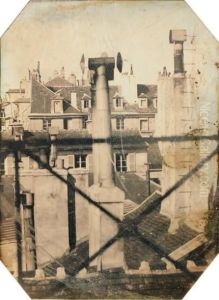Charles Choiselat Paintings
Charles-Louis Choiselat was a French photographer and lithographer born on November 19, 1815, in Paris, France. He was an important figure in the early days of photography, a time when the medium was still in its infancy and rapidly evolving. Choiselat's contributions to the field were significant, particularly in the development of panoramic photography and the stereoscope, an early device used to view images in 3D.
During the 1840s, Choiselat, alongside his business partner Stanislas Ratel, worked on improving photographic techniques. They were among the first to experiment with the daguerreotype process, which was the first commercially successful photographic process, invented by Louis Daguerre. Choiselat and Ratel's most notable contribution to photography was their development of the stereoscopic daguerreotype. They patented this process in 1850, which allowed for the creation of three-dimensional images and contributed to the popularity of stereoscopic photography.
In addition to his technical contributions, Choiselat was also known for his photographic work. He captured a variety of subjects, including portraits, landscapes, and urban scenes, many of which provide valuable historical insights into French society and architecture during the mid-19th century. His work was recognized for its aesthetic quality and technical proficiency.
Unfortunately, Charles-Louis Choiselat's life was cut short when he died on October 5, 1858, at the age of 42. Although his career was brief, his impact on the development of photographic techniques and the popularization of the medium was lasting. Today, he is remembered as a pioneer in the field of photography, with his works held in various collections and institutions around the world.
